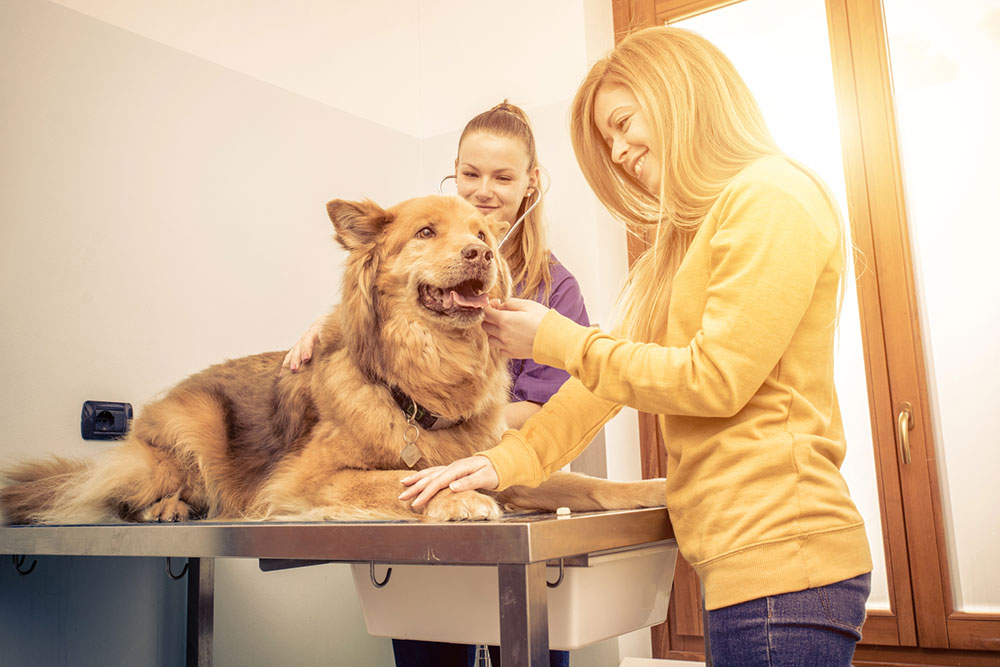Home remedies and management options for joint pain in dogs

Just like humans, dogs also start to experience joint pain when they reach a certain age. In some cases, certain specific ailments could lead to early joint pain. Poor lifestyle habits and food choices may also cause joint pain. Recognizing the discomfort in pets and seeking veterinary help as soon as possible is vital. While prompt medical treatment helps, a few home remedies and lifestyle changes with the treatment plan are also advised.
Here’s what can be done:
1. Giving pets wholesome meals
Some specific foods have nutrients known to help build stronger joints. Here are some important nutrients and properties that food sources must possess to reduce joint pain:
- Foods rich in omega-3 fatty acids
Studies suggest chronic low-grade inflammation is one of the biggest reasons for joint conditions like arthritis in dogs. Omega-3 fatty acids are known for their anti-inflammatory properties, which help young pups remain in good shape for a long time and help older dogs manage their joint pain well. Using fish oil as a supplement is recommended to help with this issue. However, green-lipped mussels are another source of omega. - Foods rich in protein
They are the building blocks of the muscles. While joint health is related to bone, it is also essential to focus on the muscles and soft tissues surrounding the bones. When the muscles around the body are strong, they can help take the body’s weight off the joints. There are fewer chances of injury, and the dog can go on walks and do activities without pain. Some of the best protein sources for dogs include turkey, chicken, fish, lamb, duck, venison, beef, and rabbit. - Foods with anti-inflammatory properties
These include turmeric, blueberries, sweet potatoes, spinach, pumpkin, and fresh ginger root. Inflammation is a trigger for joint pain, so making sure to add these ingredients to the dog’s meals will help manage their health. Pet parents can prepare meals and think of recipes to add to their pet’s meals, soups or broths, or other processed and safe wet foods.
2. Making lifestyle changes
Some everyday things can be done to help one’s dog with their joint pain, and here are some of these lifestyle changes that are recommended:
- Maintaining muscle mass
A sudden decrease in muscle mass, muscle wasting, or an increase in adipose tissue can affect joint health and cause swelling and pain. This can be due to a number of reasons, such as a lack of activity and healthy food habits and an increase in age. One should speak to a vet to understand what foods and activities should be introduced to maintain muscle mass. - Exercising
Dogs with joint pain may not want to exercise, but there are ways to make the exercises easy for them. Staying active and mobile will help their joints get some movement. Include more short walks in their routine rather than long walks, which may be stressful to them. - Making them use ramps
If they have difficulty climbing stairs, maybe one can introduce ramps in some areas of the house. Climbing stairs is good exercise, but give them a little break with the option of a ramp when their joints are flaring up.
3. Trying out alternate and natural remedies
There are other remedies that can used on the dog, and here are some examples:
- Acupuncture
This is known to help stimulate the body’s anti-inflammatory and pain-reducing responses. This may be a great option if the dog is okay with touch. - Massage therapy
Canine massages help loosen the stiff muscles, increasing blood circulation and, in turn, providing relaxation. A certified professional can help with this remedy, and there could also be some things one can do at home with their dog. Again, this is for dogs who are comfortable being handled by someone else. - Hydrotherapy
This therapy is used for low-impact exercises, including underwater treadmills or warm water swimming. Water exercise can help get the blood flow going, improve muscle mass, and benefit the joints by not stressing them too much.
4. Introducing herbal supplements and management options
Getting some help from alternative methods, like herbal supplements and management options, is never a bad idea. That said, pet parents should always discuss this with their vet and check whether the herbal options mentioned below can be added to their dog’s treatment regimen to help them:
- Oil
Research suggests that certain types of oil, especially hemp, are known to help manage joint pain in dogs and are good for their overall health. These can be given massaged or orally as chewable. - Canine turmeric supplement
Turmeric is known for its several health benefits, including its anti-inflammatory properties for pain management. Some flavored turmeric supplements are available on the market, which may be great to add to their meals. - Supplements with glucosamine
This has gained popularity in recent years as studies have shown how helpful it can be to manage pain in dogs with joint issues. The supplements on the market not only focus on dogs with arthritis but also on puppies who want to develop optimal joint health as they grow up. There are also options for dogs recovering from an injury and needing help with bone health. Always speak to a vet when making these decisions, as they can help with questions and identify whether the product is safe to use.